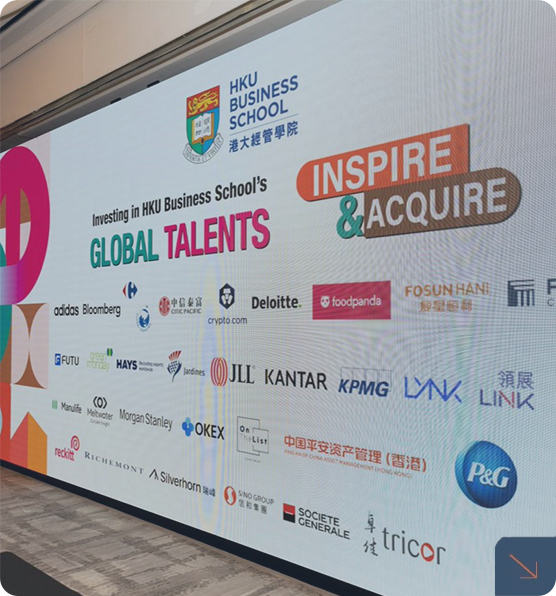人工智慧圖像生成技術日新月異,推動市場營銷、廣告設計及藝術創作等領域的創新。港大經管學院創新及資訊管理學教授蔣鎮輝早前聯同其人工智慧大模型評測團隊對22款主流AI模型進行評估,深入剖析不同AI模型在圖像生成方面的表現及潛在風險。

3917 8351
KK 804
Online video platforms face the challenge of balancing the needs of their users with those of their advertisers. Although users typically prefer to have less intrusive ads, advertisers aim to effectively catch user attention. This paper investigates how the provision of ad choice affects the effectiveness of video advertising. We argue that allowing users to choose an ad to view may trigger a “conjecture-formation-and-confirmation” process that motivates users to pay more attention to the selected ad. Two online experiments and four laboratory experiments are conducted to test the theorized underlying mechanism of the ad choice effect. Study 1 finds when users are unfamiliar (versus familiar) with the content of ad options (i.e., they need to make conjectures about ad content), ad choice is more likely to increase user attention to the chosen ad. Study 2 and Study 3 show that the impact of ad choice on user attention is more likely to be positive when users are enabled to make conjectures about ad content, such as when choice options provide more relevant information about ad content. Study 4a and Study 4b provide more direct support for the underlying mechanism by showing that the ad choice effect is attenuated when users cannot form conjectures about ad content at the choice stage. Study 5 further demonstrates that the positive effect of ad choice is robust across different ad settings. Taken together, these studies show ad choice is more likely to boost the effectiveness of video advertising when the “conjecture-formation-and-confirmation” process is triggered.
自 ChatGPT 問世以來,大語言模型LLM(Large Language Model)迅速成為全球科技競賽的焦點。LLM將被應用到越來越多領域,成为AI發展的新蓝海。目前,美國在基礎技術開發和創新應用上具有明顯優勢,其模型往往在技術前沿上表現出色;而中國的模型更強調針對本土語言環境的優化和實際應用的適應性。如何在兩國的競爭中找到平衡點並推動合作,將成為未來幾年的發展關鍵。
自 ChatGPT 問世以來,大語言模型LLM(Large Language Model)迅速成為全球科技競賽的焦點。LLM將被應用到越來越多領域,成为AI發展的新蓝海。目前,美國在基礎技術開發和創新應用上具有明顯優勢,其模型往往在技術前沿上表現出色;而中國的模型更強調針對本土語言環境的優化和實際應用的適應性。如何在兩國的競爭中找到平衡點並推動合作,將成為未來幾年的發展關鍵。
截至7月底,國內共推出超300個大模型。經過大模型數量之爭的上半場,下半場中國大模型該如何押寶?“持續穩定的政策支持、龐大的算力規模和廣闊的應用場景是中國獨特的競爭優勢和巨大的發展潛力。”蔣鎮輝教授認為,大模型將從數量到更重視應用端發展。
生成式人工智能(AI)工具發展日新月異,香港大學經濟及工商管理學院今日(12日)發表一項人工智能大語言模型評測綜合排行榜,通過港大深圳研究院建立評分系統,比較十多款大模型表現,顯示由中國科企百度開發的「文心一言」,在中文語境下綜合得分最高,但在「通用語言能力」卻跑輸「ChatGPT4-Turbo」,而大部分國產模型在英文語境下表現均處於「稍微劣勢」。
Many mobile applications use push notifications and reminders to explicitly educate, remind, and motivate users to perform healthy behaviors. However, users do not always act according to these explicit digital interventions. Our study investigates whether users’ self-regulation can be implicitly facilitated with a proper mobile interaction design. Specifically, we investigate the impacts of two touch modes that are supported by force-based interaction technology, that is, pressing and tapping. Drawing on the theory of embodied cognition, which suggests that people automatically infer meanings from their bodily actions, we conjecture that pressing, compared with tapping, enhances self-regulation because the action of pressing on the touchscreen embodies resolute approach motivation toward goals. We test our hypotheses in three experiments. The first experiment investigates beverage choices on a mobile app; the second experiment examines goal setting on a fitness app; and the third experiment focuses on personal hygiene learning on a mobile education app. The results from the three experiments show that pressing actions can improve users’ self-regulation in selecting a healthier but less tasty beverage (Study 1), setting higher exercise goals and performing more physical exercise (Study 2), and reducing lapses in maintaining personal hygiene (Study 3). In addition, such effects were more salient among users with a higher level of health knowledge and a promotion-focused health orientation. This study contributes to healthcare IT research by showing that mobile interaction can be leveraged to nudge users toward enhanced self-regulation.
人們的生活作息規律是由生理時鐘和社交時鐘共同構建而成。不過,人們的社交時鐘經常偏離生理時鐘(例如:為了工作或學習,比睡到自然醒早起;為了夜班工作或趕上項目完成期限而熬夜)— 此現象被稱為「社交時差」。社交時差如何影響消費者行為?研究的工作數據和實驗結果顯示,由於處於社交時差的消費者往往對社交互動不太感興趣,因此社交時差會減少炫耀性的消費行為。然而,此效應在以下情況會有所減弱:當消費者與熟悉的人而非陌生人進行社交互動;當他們的炫耀性消費行為不會引起社交圈子的關注;以及當他們傾向於私人場合中使用奢侈品。
User-generated content (UGC) is increasingly used in the marketing communication mix for promoting products. This research investigates how firms can actively manage consumer-generated reviews in the form of highlighting authentic reviews at firms’ discretion. Whereas highlighting a positive review is expected to lead to positive product evaluations, this practice may elicit consumers’ skepticism if consumers are explicitly informed of the promotional intent of the firm. In three studies, we examine the effect of presenting a firm-highlighted review on consumers’ consumption intention and behavior. Our findings confirm that highlighting a positive consumer review can effectively attract consumers’ attention to this review. However, the heightened attention does not always lead to higher consumption likelihood. In particular, the extremity of a highlighted review will interact with the variance of the review context as well as the reputation of the firm being reviewed to determine the effect of the firm-highlighting practice on consumers’ consumption behavior. When other reviews convey mixed opinions or when the firm has not established a strong reputation, highlighting a positive but less extreme review may effectively improve the likelihood of consumption, but highlighting a review that is extremely positive will not.





